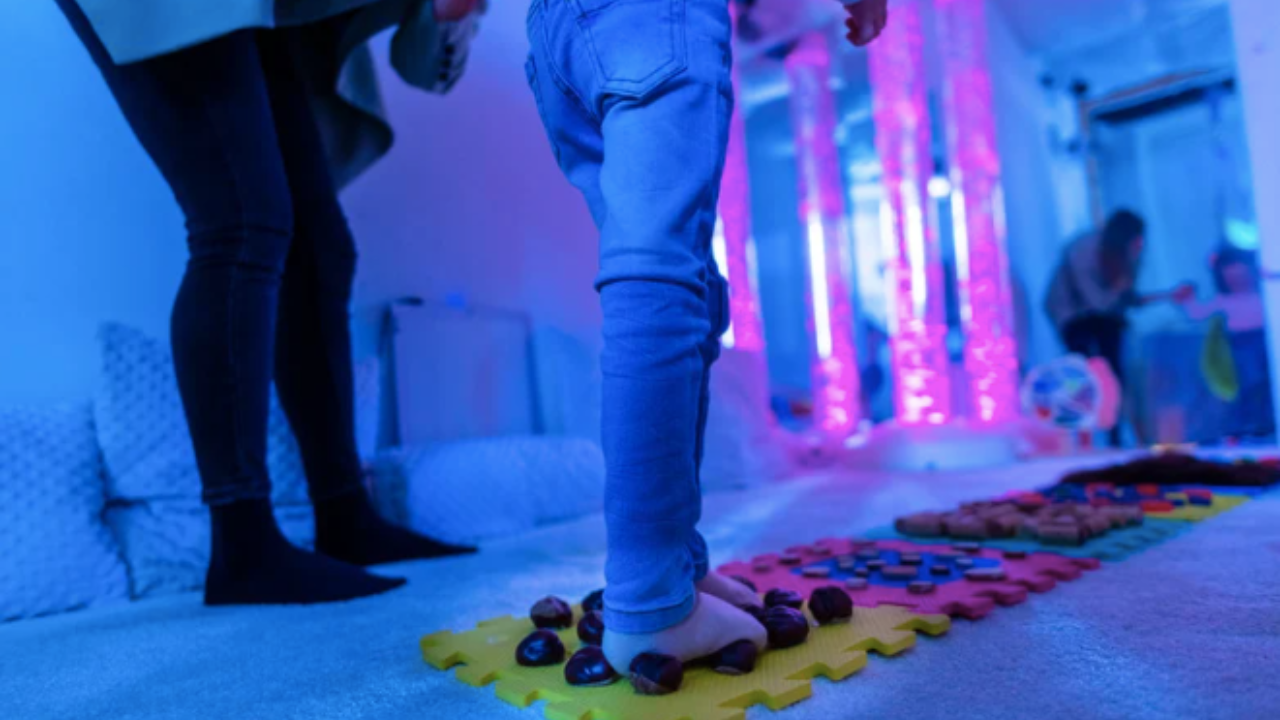
In today’s fast-evolving industries, traditional training methods often fail to deliver the depth of experience required to prepare individuals for real-world challenges. At DB Productions, we push the boundaries of training by integrating Multi-Sensory Training—a cutting-edge approach that engages sight, sound, touch, smell, and even temperature changes. This immersive method enhances learning effectiveness, retention, and decision-making under pressure, making it an essential tool for modern workforce training.
What is Multi-Sensory Training?
Multi-Sensory Training leverages advanced simulation technology to create hyper-realistic training scenarios. By stimulating multiple senses simultaneously, this approach replicates real-world environments with incredible accuracy. The result? Trainees experience scenarios as they would in real life, allowing them to react instinctively and develop critical skills in a safe yet realistic setting.
Why Multi-Sensory Training is the Future of Learning
- Immersive and Engaging – Stimulating multiple senses enhances engagement and makes learning more impactful.
- Higher Knowledge Retention – Studies indicate that multi-sensory experiences improve recall and long-term memory.
- Better Decision-Making Under Stress – Exposure to realistic stressors prepares individuals for high-pressure situations.
- Safe Yet Realistic – Allows trainees to experience dangerous scenarios without actual risk.
- Scalable and Customizable – Adaptable across industries, meeting specific training needs efficiently.
Industries Benefiting from Multi-Sensory Training
1. Safety & Emergency Response
In high-risk industries, preparedness is key. Multi-Sensory Training replicates life-threatening scenarios, enabling first responders and safety personnel to develop crucial skills without endangering lives.
- Fire Safety Simulations – Heat sensors, smoke diffusion, and alarms create an authentic fire emergency experience.
- Earthquake Emergency Training – Vibrations, structural collapse effects, and emergency sirens simulate disaster responses.
- Hazardous Environment Training – Toxic gas simulations and scent diffusion mimic chemical spill scenarios.
2. Healthcare & Medical Training
Medical professionals require precision and quick thinking under pressure. Multi-Sensory Training helps bridge the gap between theoretical learning and hands-on experience.
- Surgical Training – Haptic feedback mimics the resistance of human tissue, providing realistic practice.
- Patient Handling & Emergency Care – Changes in a simulated patient’s vitals and distress sounds prepare medical staff for real-world emergencies.
- Trauma & Psychological Training – Stress-inducing scenarios improve response strategies for mental health professionals.
3. Military & Law Enforcement Training
Tactical training requires precision, rapid response, and the ability to perform under extreme stress. Multi-Sensory Training enhances situational awareness and operational readiness.
- Search & Rescue Drills – Darkness, distress signals, and debris simulations create real-life search conditions.
- Combat & Tactical Training – Gunfire sounds, vibration feedback, and scent simulation create high-intensity combat zones.
- Maritime & Aviation Emergency Drills – Water splashes, turbulence effects, and distress signals train personnel for emergency evacuations.
4. Manufacturing & Industrial Training
Industrial environments involve complex machinery, hazardous materials, and strict safety protocols. Multi-Sensory Training ensures employees are well-prepared before they step onto the factory floor.
- Machine Operation & Maintenance – Simulated vibrations and tactile feedback train workers in operating heavy machinery.
- Workplace Safety & Hazard Management – Realistic sound effects and environmental changes help workers recognize dangers in industrial settings.
- Assembly Line Efficiency Training – Sensory cues enhance procedural learning and speed up the onboarding process.
5. Aviation & Transportation Training
Precision and safety are critical in the transportation sector. Multi-Sensory Training enhances reaction time, situational awareness, and emergency response capabilities.
- Pilot & Cabin Crew Training – Simulated turbulence, alarms, and emergency scenarios improve flight preparedness.
- Railway & Subway Operations – Realistic platform environments, braking feedback, and emergency alerts prepare transit staff for incidents.
- Driver Safety Training – Haptic steering feedback and road hazard simulations enhance defensive driving skills.
6. Education & Skill Development
The future of education lies in experiential learning. Multi-Sensory Training transforms how students grasp complex subjects.
- STEM Learning & Science Labs – Hands-on simulations bring physics, chemistry, and biology concepts to life.
- Vocational Training – Trade skills like plumbing, electrical work, and carpentry become more intuitive with sensory-driven experiences.
- History & Cultural Education – Interactive elements enhance learning about historical events and cultural heritage.
7. Sports & Athletic Training
Athletes and referees require precision, quick decision-making, and the ability to adapt to unpredictable situations.
- Sports Strategy & Game Analysis – Multi-angle simulations improve tactical awareness.
- Injury Prevention & Recovery – Real-time motion tracking aids rehabilitation exercises.
- Referee & Umpire Training – Sensory cues enhance judgment and reaction time.
Transform Your Training with DB Productions
At DB Productions, India we design industry-leading Multi-Sensory Training solutions that revolutionize how professionals learn and adapt. Whether you are in healthcare, emergency response, manufacturing, aviation, or education, we can tailor a training solution that meets your needs.
🚀 Are you ready to elevate your training programs? Contact us today to discover how Multi-Sensory Training can transform your workforce readiness and operational efficiency!

